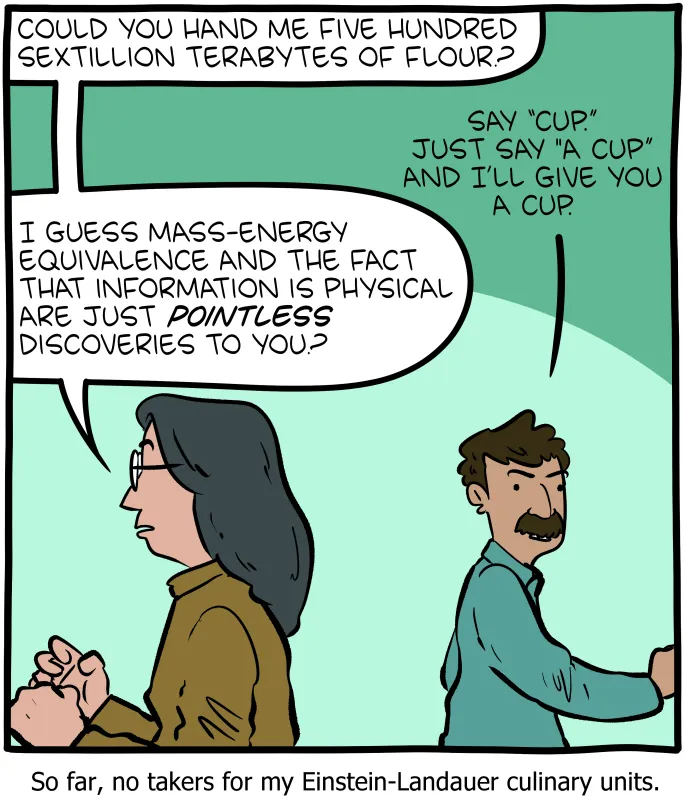this post was submitted on 13 May 2025
919 points (99.0% liked)
Science Memes
16948 readers
2770 users here now
Welcome to c/science_memes @ Mander.xyz!
A place for majestic STEMLORD peacocking, as well as memes about the realities of working in a lab.

Rules
- Don't throw mud. Behave like an intellectual and remember the human.
- Keep it rooted (on topic).
- No spam.
- Infographics welcome, get schooled.
This is a science community. We use the Dawkins definition of meme.
Research Committee
Other Mander Communities
Science and Research
Biology and Life Sciences
- !abiogenesis@mander.xyz
- !animal-behavior@mander.xyz
- !anthropology@mander.xyz
- !arachnology@mander.xyz
- !balconygardening@slrpnk.net
- !biodiversity@mander.xyz
- !biology@mander.xyz
- !biophysics@mander.xyz
- !botany@mander.xyz
- !ecology@mander.xyz
- !entomology@mander.xyz
- !fermentation@mander.xyz
- !herpetology@mander.xyz
- !houseplants@mander.xyz
- !medicine@mander.xyz
- !microscopy@mander.xyz
- !mycology@mander.xyz
- !nudibranchs@mander.xyz
- !nutrition@mander.xyz
- !palaeoecology@mander.xyz
- !palaeontology@mander.xyz
- !photosynthesis@mander.xyz
- !plantid@mander.xyz
- !plants@mander.xyz
- !reptiles and amphibians@mander.xyz
Physical Sciences
- !astronomy@mander.xyz
- !chemistry@mander.xyz
- !earthscience@mander.xyz
- !geography@mander.xyz
- !geospatial@mander.xyz
- !nuclear@mander.xyz
- !physics@mander.xyz
- !quantum-computing@mander.xyz
- !spectroscopy@mander.xyz
Humanities and Social Sciences
Practical and Applied Sciences
- !exercise-and sports-science@mander.xyz
- !gardening@mander.xyz
- !self sufficiency@mander.xyz
- !soilscience@slrpnk.net
- !terrariums@mander.xyz
- !timelapse@mander.xyz
Memes
Miscellaneous
founded 2 years ago
MODERATORS
you are viewing a single comment's thread
view the rest of the comments
view the rest of the comments

Wouldn't this make the units temperature-dependent?
Landauer limit is one kTln2 per bit of information, so at 300K about 3 zeptojoule per bit.
Dividing by c² we get 32 micro-quectogram per bit, so 32 yoctogram per terabit. 256 yoctogram per terabyte.
The Author wants half a septillion terabytes, 0.5•10²⁴ terabytes, half a yotta-terabyte.
That makes 128 grams.
Since I don't know what on earth "a cup of flour" is, I can't judge if the comic character proposes a reasonable conversion, but 0.1kg seems like a reasonable amount to use in cooking.
For baking I would rather have my units temperature dependent than density dependent (I can compact my flour or work with water or nuts, all having different densities, but my room temperature will always be roughly 300).
I endorse einstein-landauer units.
184 grams is a touch high for "a cup of flour", but I'm not gonna check your math, and the comic probably wanted to use "close enough" round-ish numbers. The weight of a cup of flour is usually somewhere between 120g and 145g, going by the conversions used by major baking recipe publishers like King Arthur, Cooks Illustrated, Washington Post, New York Times, etc.
I fear their apartment is at -50°C and this is a cry for help.
At least I am relieved to know that even acclaimed authors native to the cup-measurement system don't know what "a cup of flour is".
I'll be off baking my pannenkoek with 150g of flour then.
I figured it out. Typed the ln2 into my text and then forgot it in the calculator.
Great, I'ma redo alll my numbers then rq
Mass, not weight! Only because we're being technical already.
Grams are a measure of mass or weight. I assume we're talking about measuring this flour here on planet earth, within the effects of its gravitational field lol
At what elevation and where in Earth? 🤔 Again, only being this technical because that's the tone. Not being pedantic.
The variance involved in converting cups of flour to grams is much greater than any gravitational variances caused by elevation or location. So that's sort of irrelevant here.
Oh, I disagree, on goofy technical posts like this is exactly the place to worry about it. The comic is about asking for an amount of bytes of flour and you're upset I'm making a joke about mass and weight being different?
Lmao I'm not upset dawg, just matching your nitpicks with more nitpicks
This is a great second argument for using weight not volume for measurements.
Measuring mass is of course not viable, but measuring weight in a consistent location means all the ratios end up correct. While ratios between volume and weight measured substances change (and flour probably compacts differently).
That is why one should always use a scale to measure their fluids, and why metric is superior where 375ml of water or milk are 375g (convert the recipe ahead of time at a reference location), making this trivially easy.
If you wish to then correct the total mass of your dish, you can simply compare the weight and volume of water to work out the mass to weight ratio and correct accordingly.